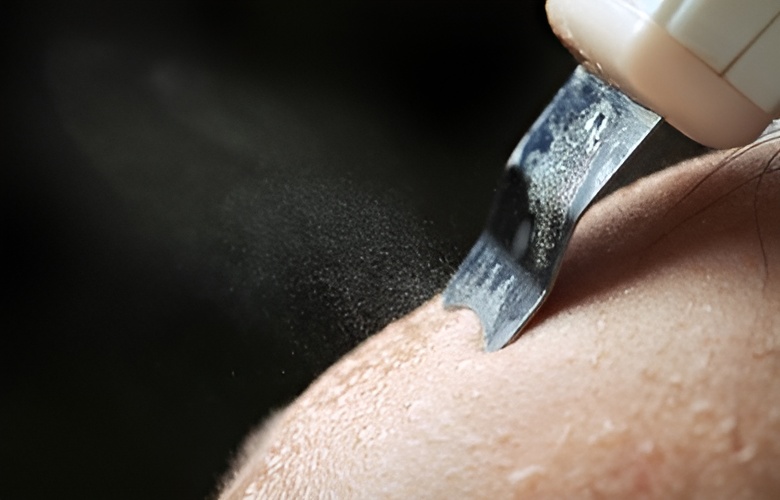
Here is how to properly exfoliate for radiant, healthy skin. Why do we exfoliate?
As we age, achieving radiant and glowing skin can seem like an unattainable goal due to the go-slow of cell turnover, resulting in a dull complexion caused by the buildup of dead skin cells. However, the good news is that by embracing a suitable exfoliating routine, you can safely and effectively eliminate the dead skin layer and regain your skin’s healthy and vibrant glow. Are you ready to revive your skin’s radiance?
Why it is Important to Exfoliate?
Exfoliating is essential for keeping healthy and radiant skin. Our skin is continuously renewing itself, shedding dead skin cells to reveal fresh, new cells underneath. But, as we age, our skin’s natural exfoliation process slows down, leading to a stockpile of dead skin cells on the surface of our skin. This stockpile can clog our pores, resulting in a dull and uninspiring complexion, as well as contributing to skin problems such as acne, blackheads, and uneven skin tone.
Exfoliating helps to remove this buildup of dead skin cells, unclog pores, and stimulate the growth of new skin cells, resulting in a brighter, smoother, and smoother complexion. By eradicating the dead skin cells, exfoliating also helps to recover the effectiveness of your other skincare products by allowing them to penetrate deeper into the skin.
Regular exfoliation also helps to prevent premature aging by encouraging collagen production and reducing the appearance of fine lines and wrinkles. It also improves skin texture and tone, leaving your skin looking healthy, vibrant, and youthful.
Though, it’s important to exfoliate appropriately to avoid damaging your skin
In this article, we will discuss how to properly exfoliate for radiant, healthy skin. We will cover the benefits of exfoliation, protections to take, how often to exfoliate, the best tools to use, and tips for getting the most out of your exfoliation routine.
Benefits of Exfoliation
Exfoliation offers some benefits, including:
Exfoliating has numerous benefits for the skin, some of which are:
- Improves Skin Texture: Exfoliating takes away dead skin cells, unclogs pores, and encourages the growth of new skin cells. This leads to smoother, softer, and more even skin texture.
- Brightens Skin: By removing the layer of dead skin cells, exfoliation reveals brighter, more radiant skin.
- Reduces Acne and Blackheads: Exfoliating helps to unclog pores, removing excess oil, dirt, and bacteria, reducing the possibility of acne and blackheads.
- Evens out Skin Tone: Regular exfoliation helps to even out skin tone by get rid of hyperpigmentation, dark spots, and sun damage.
- Improves Product Penetration: Exfoliating helps to improve the effectiveness of other skincare products by allowing them to penetrate deeper into the skin.
- Reduces Fine Lines and Wrinkles: Exfoliating boosts collagen production, reducing the presence of fine lines and wrinkles and preventing premature aging.
- Reduces Ingrown Hairs: Exfoliating can help to prevent and reduce ingrown hairs by removing dead skin cells and unclogging hair follicles.
Precautions to Take
While exfoliating can be beneficial for the skin, it’s important to take some precautions to avoid damaging the skin. Here are some precautions to take while exfoliating:
- Choose the Right Exfoliate: Use an exfoliate that is appropriate for your skin type and needs. Avoid harsh scrubs or exfoliates with large particles that can cause micro-tears in the skin.
- Don’t Exfoliate Too Often: Over-exfoliating can cause irritation and damage to the skin. How often you should exfoliate hang on on your skin type and the type of exfoliation you’re consuming. Usually, it’s recommended to exfoliate no more than 2-3 times a week.
- Be Gentle: When exfoliating, use gentle circular motions and don’t apply too much pressure. Avoid using hot water as it can also cause irritation and dryness.
- Avoid Sensitive Areas: Avoid exfoliating sensitive areas such as the eye area, lips, and any areas of broken or irritated skin.
- Moisturize: After exfoliating, it’s essential to moisturize to help bring back the skin’s barrier and prevent dryness and irritation.
- Protect from the Sun: After exfoliating, the skin is more susceptible to UV damage. Use broad-spectrum sunscreen with an SPF of at least 30 to protect your skin from the sun’s damaging rays.
How Often Should You Exfoliate?
Depending on your skin type and the product you’re using, you should exfoliate frequently. Generally speaking, exfoliating once or twice a week is preferable. Less frequent exfoliation is ideal if you have sensitive skin.
The Best Tools to Use
There are several tools you can use for exfoliation, including:
- Ultra-Sonic Scrubs: The ultrasonic waves make vibrations on the skin’s surface, which help to release and remove dirt, oil, and dead skin cells.
- Brushes: Brushes like Clarisonic or Foreo can be used to physically exfoliate the skin.
- Chemical exfoliant: AHAs and BHAs are chemical exfoliants that dissolve dead skin cells.

Tips for Receiving the Most Out of Your Exfoliation Routine
- Always moisturize after exfoliating: Exfoliation can dry out your skin, so it’s important to moisturize afterward to keep your skin hydrated.
- Take it slow: If exfoliating is new to you, begin with a gentle product and work your way up to stronger ones.
- Apply sunscreen: Since exfoliation might make your skin more susceptible to the sun, sunscreen is crucial for skin protection.
Your Step-By-Step Guide to Physically Exfoliating the Face
Here’s a step-by-step guide on how to physically exfoliate your face:
- To remove any dirt or makeup, wash your face with warm water and a mild cleanser.
- Apply a pea-sized amount of exfoliant to your forehead, both cheeks and chin while your skin is still damp.
- Avoid the region around your eyes as you spread the exfoliant throughout your face in gentle circular motions.
- Gently massage the exfoliant all over your face for about 30 seconds, being careful not to press down too hard.
- Thoroughly wash the exfoliant off your skin with warm water.
- Use a soft cloth to gently pat your skin dry.
- To calm and hydrate your skin, use creams and serums made specifically for your skin type, such as moisturizer or serum.
It’s important to note that you should only exfoliate your face one to two times per week, dependent on your skin type and sensitivity. Over-exfoliation can harm the skin, so it’s best to be gentle and cautious when exfoliating.

